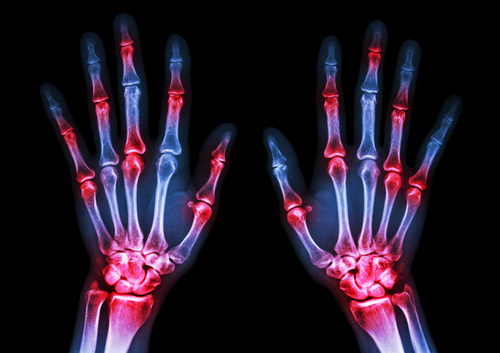AI Vision Models Leap Forward: Automated Rheumatoid Arthritis Diagnosis Matches Radiologists

AI Breakthrough in Medical Imaging
A recent surge in computer vision research has produced a standout breakthrough: an AI system that fully automates the scoring of rheumatoid arthritis from X-ray images with accuracy rivaling human radiologists[1]. Published among 80 computer vision papers on September 8, 2025, this innovation signals a major advance for medical diagnostics both in speed and reliability.
Why This Matters
Rheumatoid arthritis (RA) is a chronic disease often requiring frequent imaging for effective management. Traditional RA scoring is labor-intensive and prone to inter-expert variation, leading to delays and inconsistent care. The new AI model leverages advanced vision architectures to analyze X-rays and generate scores instantly, streamlining workflow and standardizing results[1].
How the System Works
- Fully automated: The system can process standard X-ray inputs, deliver a diagnostic score, and present annotated findings with no human intervention required.
- Expert-level accuracy: Benchmarking shows its performance matches or exceeds experienced medical professionals, especially in identifying subtle disease progressions[1].
- Scalable impact: By eliminating the bottleneck of manual interpretation, the system offers high-throughput diagnostics for clinics and telemedicine providers, promising broader access to quality RA care.
Wider Trends & Future Implications
This advance sits at the intersection of two dominant AI research trends: specialized domain foundation models and medical image analysis. Similar breakthroughs are being reported across radiology, enabling automated diagnosis for diseases ranging from cancer to heart conditions[1]. Experts believe such tools will reduce diagnostic errors, accelerate treatment decisions, and enable new remote care models. The ability to match expert accuracy while scaling globally could profoundly change healthcare delivery and patient outcomes.
Industry leaders are watching for pathway approvals and real-world deployment, while ethicists highlight the need for transparency in AI systems used in high-stakes decision-making. As regulatory bodies assess safety and reliability, the success of AI-powered RA diagnosis may become a template for broader adoption of machine learning in medicine.
How Communities View Automated RA Diagnosis AI
Online discussion centers around the breakthrough’s potential for faster, fairer, and more accessible arthritis treatment. Three opinion clusters dominate:
-
Optimism about Access and Efficiency: Many users on r/MachineLearning and r/medicalAI praise the prospect of rapid, standardized diagnosis, envisioning reduced waiting times and equitable care, especially in under-resourced areas.
-
Caution Over Clinical Integration: Tech-savvy practitioners on Twitter, including @medAIreality and @radiologyprof, stress the need for robust clinical trials and clear regulatory pathways. Concerns remain about AI mistakes and patient trust.
-
Ethics and Explainability: A vocal minority raises transparency issues, questioning how the AI justifies its scores. Posts from @BioethicsAI and r/HealthTech call for interpretable models to support accountability in care.
Overall sentiment is strongly positive among patients and technologists, but cautious among healthcare professionals awaiting more validation. Notable contributors like @dr_alexandria (AI radiologist) and @healthtechpolicy offer balanced, expert perspectives.